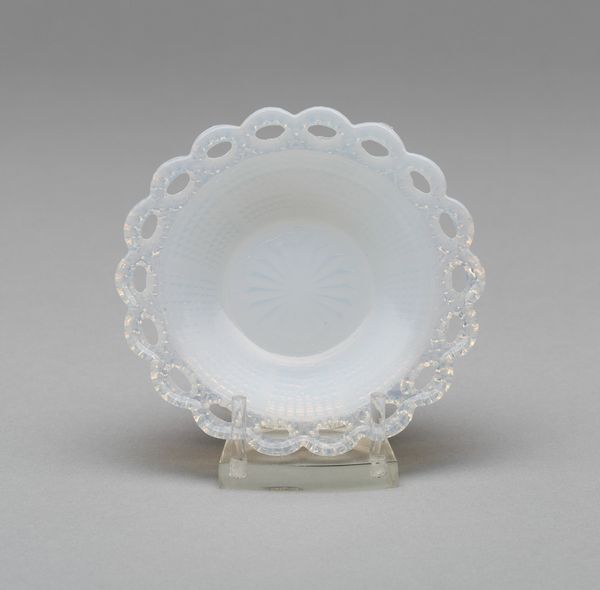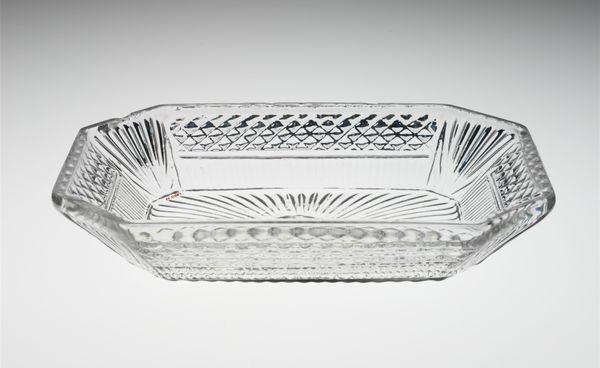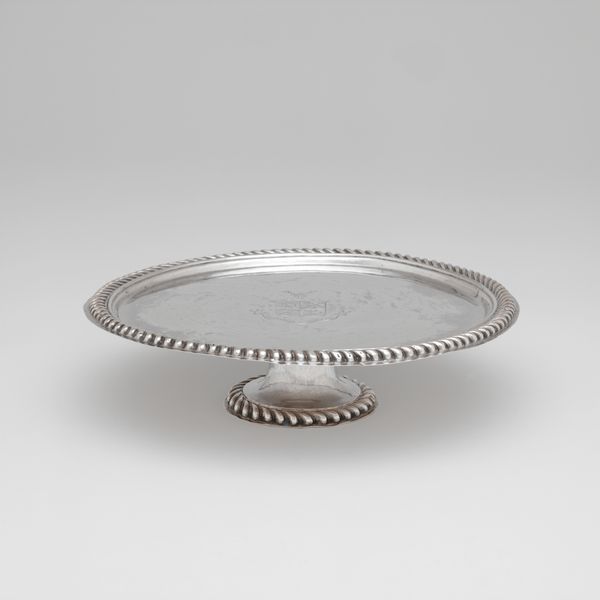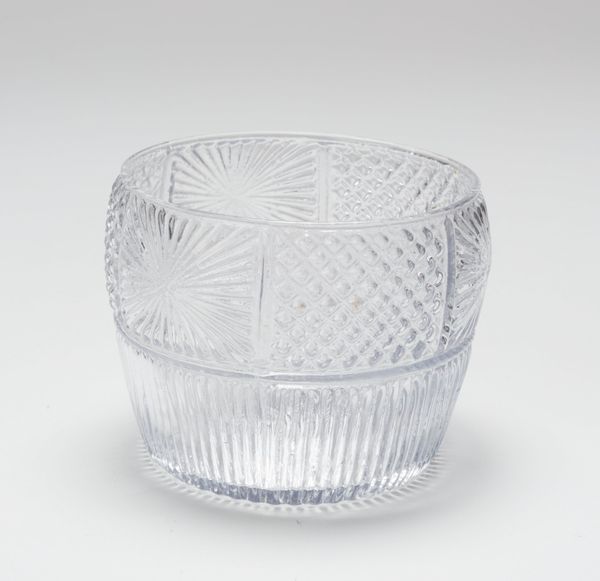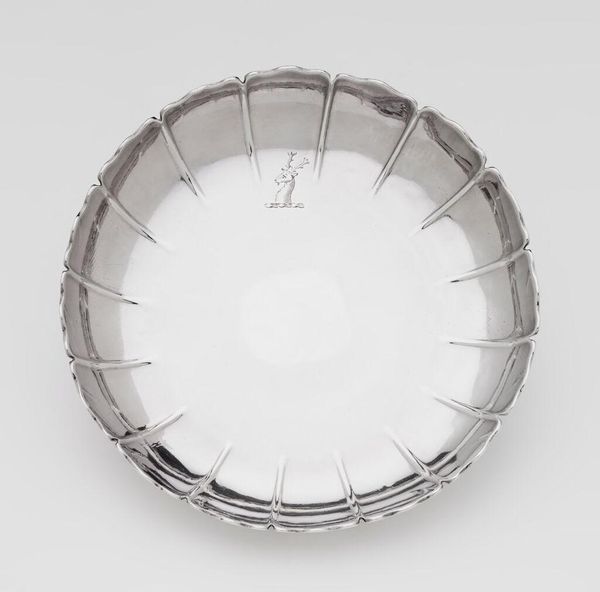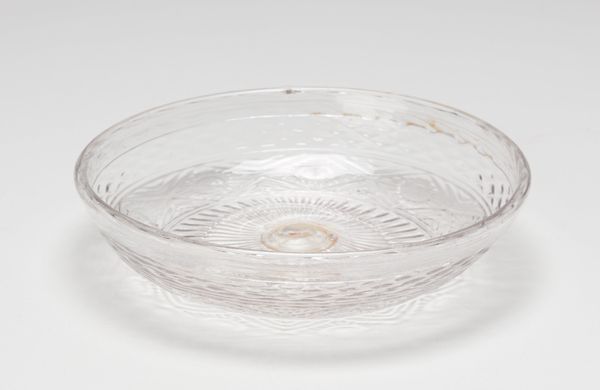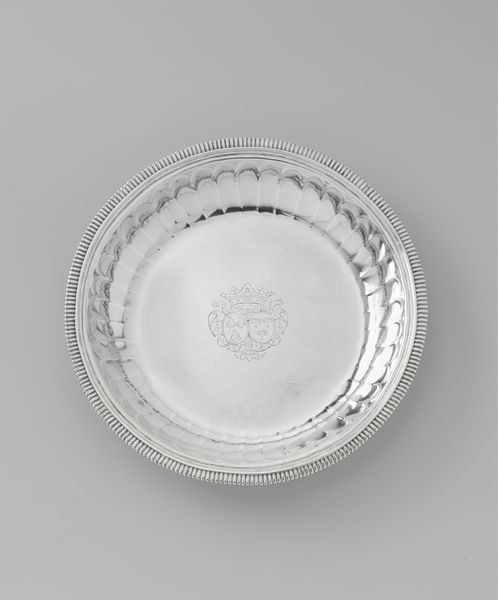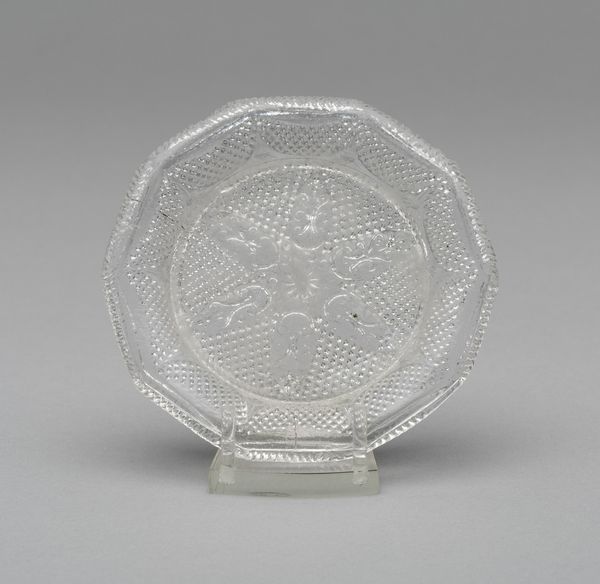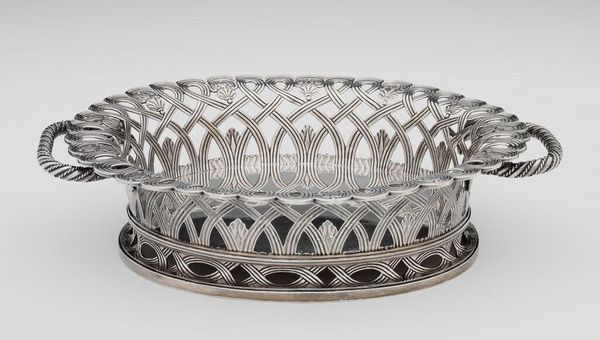
glass
#
neoclacissism
#
glass
#
geometric
#
decorative-art
Dimensions: 2 13/16 x 8 9/16 in. (7.1 x 21.7 cm)
Copyright: Public Domain
Editor: Here we have "Oval Dish," created in 1818 by Pellatt & Green. It's a striking piece crafted from glass, and currently held at the Metropolitan Museum of Art. I'm really drawn to how the light plays off of all the geometric facets. How might we contextualize this type of object? Curator: This dish exemplifies Neoclassical decorative arts, a style heavily influenced by the rediscovery of Roman artifacts and aesthetics in the 18th and 19th centuries. Pellatt & Green catered to an aspirational middle class. Does the clear, almost clinical, execution remind you of any other design movements of the time? Editor: Now that you mention it, there's something very…antiseptic about it, almost mass-produced in its precision. Not quite the hand-crafted aesthetic you might associate with other luxury items. Curator: Precisely. This "precision" becomes key when we discuss the broader socio-political influences, since decorative arts like these signified the growing Industrial Revolution. Machine production meant these neoclassical patterns could become widely available and at less expense. Editor: I hadn't really considered the political statement something as simple as a dish could represent! Does this dish challenge or conform to the art and class dynamics of the period? Curator: It's a great question. This object blurs the lines. It imitates upper-class design but simultaneously makes it accessible. It uses history to solidify social structures in its visual language but begins to make that language something reproducible by all, using emerging industry as the messenger. Editor: So the Neoclassical style here does more than signal a return to Greek and Roman forms; it makes high design more egalitarian through industry. Thank you, that shifts how I look at even simple designs! Curator: Absolutely, looking at decorative objects like this reveals that art's purpose is so heavily interwoven within our cultures and their structures. There’s always much more there than what catches our eye initially.
Comments
No comments
Be the first to comment and join the conversation on the ultimate creative platform.

